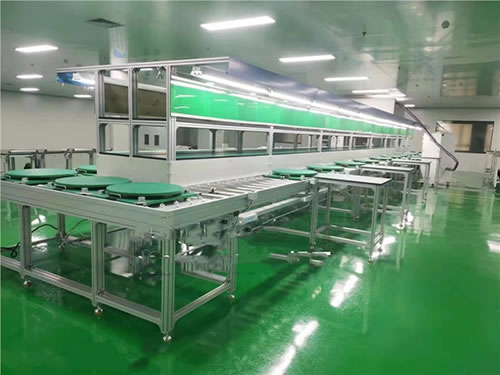Research on Cascaded Technology of Lithium Battery Modules in Hard Material Crushing and Grinding Equipment

Abstract:
The development of renewable energy sources has led to an increased demand for efficient and sustainable methods of processing hard materials such as lithium batteries. This paper presents a study on the cascading technology of lithium battery modules in hard material crushing and grinding equipment, focusing on improving the efficiency and reducing the environmental impact of the process.
Introduction:
Lithium-ion batteries are widely used in various applications, including electric vehicles, smartphones, and laptops. However, their disposal poses significant challenges due to the presence of toxic chemicals and heavy metals. One solution is to recycle these batteries by extracting valuable materials like lithium, cobalt, and nickel. This process involves crushing and grinding the batteries into smaller particles for further processing. In this study, we explore the use of cascading technology to optimize the crushing and grinding process.
Cascading Technology:
Cascading technology refers to the process of using multiple stages or levels of crushing and grinding equipment to achieve a desired particle size distribution. By employing different types of crushers and grinders at each stage, it is possible to improve the overall efficiency and reduce energy consumption. For example, a primary crusher may be used to break down large pieces of battery into smaller chunks, followed by a secondary crusher to further reduce the size. Finally, a grinder can be employed to produce fine powder suitable for subsequent chemical processing.

Advantages of Cascading Technology:
The main advantage of cascading technology is its ability to increase throughput while minimizing energy consumption. By utilizing different types of equipment at each stage, it is possible to tailor the process to the specific requirements of the battery material being processed. Additionally, cascading technology can help reduce dust emissions and noise pollution associated with traditional crushing and grinding methods. Furthermore, it allows for better control over the final particle size distribution, which is crucial for downstream processing steps.
Challenges and Future Research:
Despite its potential benefits, implementing cascading technology in hard material crushing and grinding equipment requires careful consideration of several factors. These include the selection of appropriate crushers and grinders, optimization of operating parameters, and integration with existing processes. Future research should focus on developing more efficient and sustainable cascading systems that can handle a wider range of battery materials and configurations.
Conclusion:
In conclusion, cascading technology offers an promising approach to improving the efficiency and sustainability of hard material crushing and grinding processes for lithium battery recycling. By leveraging the strengths of different types of equipment at each stage, it is possible to achieve higher throughput rates, reduced energy consumption, and improved environmental performance. Further research is needed to fully realize the potential of this technology and address the challenges associated with its implementation.